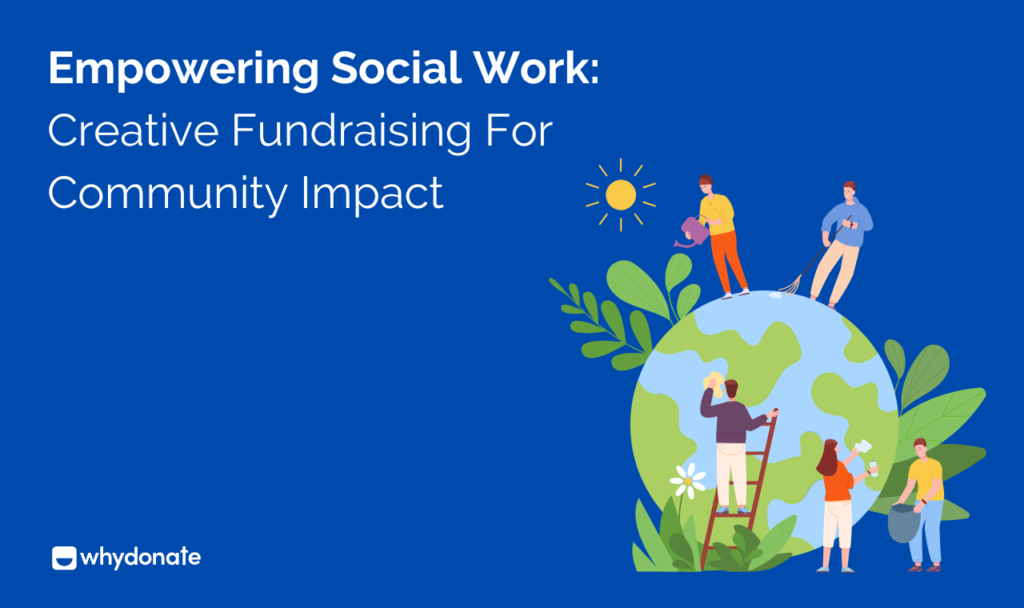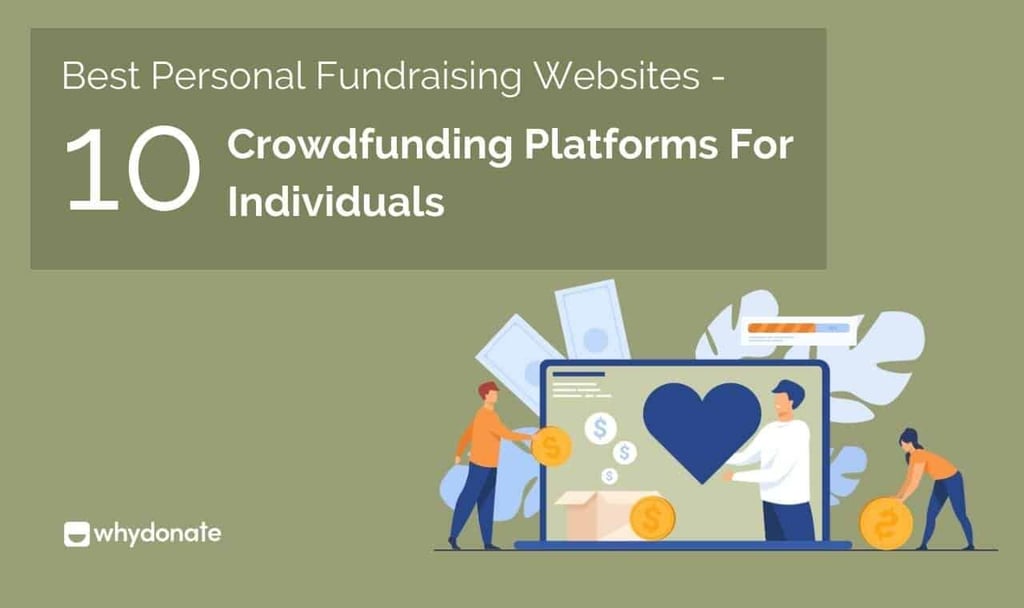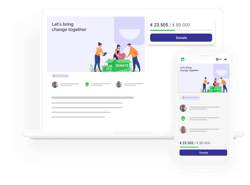Promoting social justice, helping underprivileged groups, and building communities depend on social work. Social workers offer necessary services that enhance life, whether tackling homelessness, child welfare, or mental health.
Nonetheless, many social work groups battle financial uncertainty even if their services are quite valued. Maintaining and growing their influence is greatly challenged by limited government support, erratic donations, and rising service expectations.
Social work organizations have to adopt creative and sustainable fundraising plans if they are to guarantee long-term success. Grants and charitable events are among the conventional funding sources that are inadequate.
These groups may strengthen their financial bases and involve supporters in fresh and significant ways by investigating innovative ideas like online fundraising, business alliances, and community-driven projects.
The financial difficulties social work organizations encounter are discussed in this article together with creative fundraising ideas that can enable their success.
Table of Contents
Understanding The Financial Challenges In Social Work
Although social work groups commonly use government money and grants to support their initiatives, these sources are sometimes few and quite competitive. Changing policies and budget cuts can create uncertainty about long-term financial stability, which drives businesses to look for other financing sources.
Furthermore, although very important, donations can be erratic depending on donor preferences, the state of the economy, and world events. This financial uncertainty makes planning and growing necessary services challenging.
Social work organizations must seek alternate funding and workforce investments to overcome these financial challenges. Investing in efficient initiatives that help professionals enhance their qualifications can boost funding prospects.
Aspiring social workers can quickly get a fast track master’s in social work to qualify for higher-paying jobs, leadership roles, and advanced grants. Thriving organizations can gain credibility, institutional funding, and sustainable community support by assisting personnel in accelerated education.
To be sustainable, social work agencies must vary their income sources via innovative fundraising, business alliances, and community-driven projects. A well-rounded fundraising plan improves financial resilience and increases the organization’s capacity to produce long-lasting community impact.

Traditional Vs. Creative Fundraising Strategies
Social work groups depend on fundraising to support communities. Although social work groups have long relied on grants, donations, and charity events, the increasing demand for services and unpredictable funding necessitates more innovative and appealing solutions.
1. Traditional fundraising methods
Historically, social work agencies have relied on a small number of primary sources of funding:
Many groups seek government, foundation, and nonprofit donations. These funds can give significant support but are competitive and may have usage limits.
Although direct donations from people still provide a significant amount of money, they can be erratic, particularly in recessionary times.
Fundraising activities like galas, auctions, and community fairs attract donations. They take time and money to plan and may not pay off.
2 The shift toward creative fundraising
According to Statista, in 2024, US digital capital raising models raised over 36 billion dollars, putting it the global leader. Second was China, with volumes exceeding 16 billion U.S. dollars. A distant third, the UK raised 5.17 billion U.S. dollars using digital capital-raising strategies.
Creative fundraising tactics emphasize sustainability, community, and technology above one-time donations. These techniques aim to be more engaging, scalable, and financial landscape-adaptable.
Here are some of the benefits of innovative fundraising:
- Greater community engagement: While creative tactics actively involve contributors through interactive events, social media campaigns, and peer-to-peer fundraising, traditional methods sometimes depend on passive donations.
- Scalability and sustainability: Unlike one-time gifts, subscription-based giving, social entrepreneurs, and corporate alliances offer continuous income sources for long-term financial stability.
- Leveraging technology for efficiency: Online tools, crowdsourcing sites, and digital payment systems help companies access a larger audience more efficiently and simplify charitable donations.
3. Strengthening Community Involvement Through Innovation
Innovative fundraising increases financial support and community involvement. Participating in a fundraising challenge, attending a virtual event, or buying a social work product makes people more likely to become long-term supporters.
Social work groups that use traditional and unique fundraising methods can strengthen their finances and continue serving their communities. These groups can establish lasting relationships and maintain long-lasting change by thinking creatively and engaging supporters in novel ways.
Creative Fund-Raising Strategies For Social Work Organizations
Social work organizations can engage donors and diversify revenue streams with innovative fundraising tactics to ensure financial sustainability and increase impact.
Below are effective methods:
1. Digital and online fundraising
The Internet offers strong instruments for gathering money and disseminating it to more people:
- Crowdfunding campaigns on sites like WhyDonate, GoFundMe, and Kickstarter allow companies to get small contributions from many people.
- Targeted donation campaigns and peer-to-peer sharing made possible by social media fundraising like Facebook, Instagram, and LinkedIn help.
- With little expenses, virtual fundraising events like webinars, online auctions, and gaming marathons draw worldwide participation.
- Programs based on subscriptions and monthly donor memberships give a consistent income source.
2. Community-driven fundraising initiatives
Using local networks helps to build solid, eco-friendly support systems:
- Local business relationships provide co-branded fundraising events and sponsorship possibilities.
- Peer-to-peer fundraising, where volunteers organize their gift campaigns, encourages grassroots involvement.
- Paid instructional courses on mental health and financial literacy and community seminars helped raise money and provided priceless tools.
3. Event-based fundraising
Events are often helpful in getting more people involved in the fundraising initiative and attracting more dedicated donors:
- Memorable donor experiences come from themed events like art auctions, charitable races, and “dine-for-a-cause” campaigns.
- Programs like “Pay it forward” (suspended meals or gift matching) inspire ongoing community service.
- Benefit events and performances highlight local talent and help to generate money for a cause.
4. Corporate and institutional partnerships
Working with companies and organizations can create chances for big financing:
- Corporate social responsibility (CSR) partnerships let companies help while improving their profile.
- Workplace-giving initiatives such as volunteer grants and employee gift matching help to incorporate charity into business operations.
- Social entrepreneurs build sustainable income sources by selling goods or services to support social projects.
5. Sustainable revenue-generating models
Changing the sources of income guarantees financial resilience:
- Selling goods, such as handcrafted crafts or branded clothing, makes supporters brand champions.
- Counseling, training, or consulting—service-based income—offers financial support and worthwhile community benefits.
- Grant writing and institutional funding plans guarantee long-term financial support for critical projects.
Combining these innovative fundraising strategies will help social work agencies increase community involvement and impact while creating a more secure financial future.

Strengthening Social Work Through Innovative Fundraising
Social work organizations cannot continue their crucial contribution to helping communities, promoting social justice, and offering essential services without sustainable funding. Although grants and contributions are still excellent sources of money, they are sometimes erratic and finite.
Organizations that want long-term influence must adopt innovative fundraising ideas that include donors, diversify income sources, and strengthen enduring community ties.
Social work agencies can build more muscular financial systems by using digital platforms, developing corporate alliances, planning experiential events, and implementing sustainable income-generating strategies.
These creative ideas guarantee money and encourage greater community involvement, enabling contributors to feel directly connected to the cause.
The approaches to finance social work must change along with the field’s terrain. Social work agencies that prioritize flexibility, creativity, and involvement will be more suited to produce significant, long-term transformation.
Thinking creatively and investigating fresh fundraising prospects will help them to keep empowering people, building communities, and promoting enduring social impact.

















